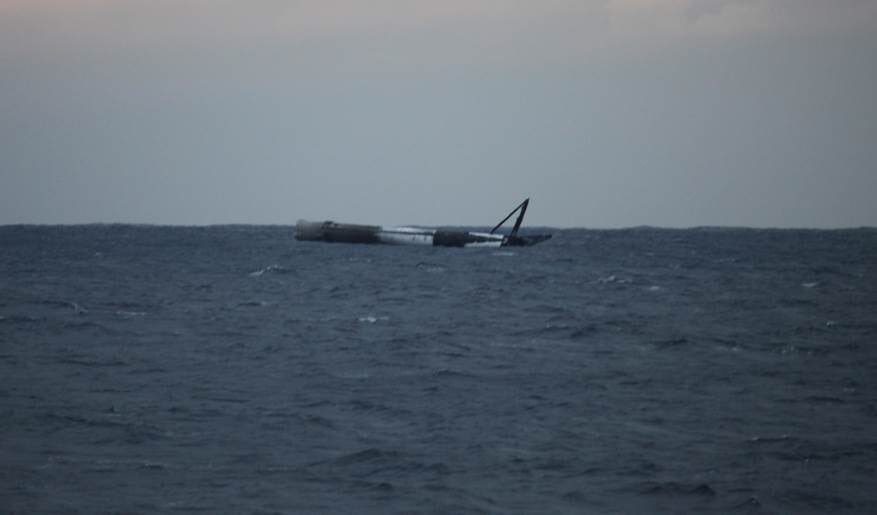SpaceX rocket survived a fall into the water and did not even fall apart

On the evening of January 31, 2017, the Falcon 9 launch vehicle successfully launched the GovSat-1 satellite into geostationary station. Then the first step returned to Earth. Elon Musk posted on Twitter a photo missiles and comment: "The missile was test landing on a very strong reverse thrust. Landing was carried out on the water, so as not to damage the floating platform, but surprisingly, she survived. " Although it was assumed that at such a high speed the rocket would be lost, but for some reason it did not even fall apart. “Let's try to tow it to the shore,” added Ilon Musk. It seems that SpaceX now has additional concerns because of the unforeseen reliability of the missiles.
"Strong thrust reversing" means that instead of one central engine during landing were involved just three, so that instead of 2,92 g missile acceleration giant experienced overload 10,75 g, i.e. over 100 m / s² (according to the calculation of the fan on Reddit ).
The result of this landing is quite unexpected. Last September, SpaceX published a video compilation of its unsuccessful launches and landings. At the very first fragment, you can see how the first step tries to get on the water at high speed, but collides with water and explodes.
The rocket should not survive the collision, because it destroys the relatively thin aluminum-lithium containers that separate the fuel and the oxidizer, writes Ars Technica . And now it is not something that did not explode, but did not even fall apart.
Perhaps over time, the company SpaceX will publish video from surveillance cameras - and then it becomes clear why the first stage did not explode.
